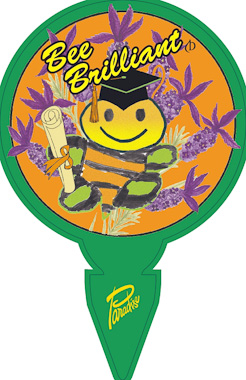Give your garden the brilliance it deserves! Bee Brilliant is an early flowering fast growing lavender with deep purple flowers. The showy yet compact habit of Bee Brilliant makes it perfect for low hedges or as a patio feature. With highly fragrant flowers and foliage it is ideal for the herb garden and is well suited to picking for indoor displays and pot pourri. Flowers are deep purple topped with dark purple wings.
Bee series lavenders are tolerant of a wide range of conditions and can be grown Australia wide. They are tolerant of light frosts and humid conditions but must be protected from heavy frosts.
Container displays
Small informal hedges
Providing colour in Xeriscapes
Encourages butterflies, bees and other beneficial insects and birds
Cut flowers
- Borders
- Containers
- Exotic
- Foliage
- Fragrance
- Scented Flowers
- Shrubs
- Standard
Full sun
Soil must be open and free draining. Increase calcium availability if required using gypsum, not lime.
Bee series lavenders are intolerant of heavy or waterlogged soils. Improve drainage if necessary using well rotted organic matter or raised beds.
Space plants 30cm apart for a hedge or border
Dig the planting hole twice the width and depth of the pot that is being planted. Backfill with topsoil that has been improved with organic matter. Make sure that the rootball sits no lower than the surrounding soil.
Lavender is very drought tolerant once established however moderate watering for the first few months after planting will encourage stronger more vigorous plants.
Mulching is important to protect surface roots from extremes of temperature and helps to retain soil moisture. Mulch should be applied over the soil to 10cm deep. Keep mulch 5cm-10cm away from the base of the plant so as not to impede airflow which may lead to an increase in pest and disease problems.
Lightly trim after flowering to remove spent blooms and to maintain shape.
Fertilise in spring and summer using a high quality complete fertiliser.
 Look out for this label in all good garden centres.
Look out for this label in all good garden centres.